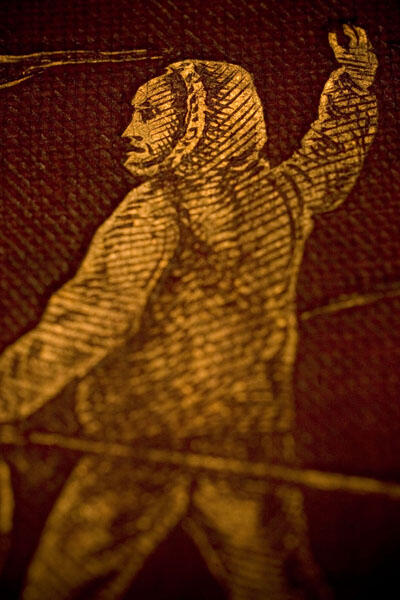Book covers
This portion of the exhibit displays some of the beautiful book covers from the Botany Libraries collections.
Travels in the East Indian Archipelago by Albert Smith Bickmore

|

|

|

|
Details from cover
From the book ...
"The Battas certainly do not eat human flesh for lack of food, nor wholly to satisfy revenge, but chiefly to gratify their appetites. The governor at Padang informed me that these people gave him this odd origin of their cannibal customs: Many years ago one of their rajahs committed a great crime, and it was evident to all that, exalted as he was, he ought to be punished, but no one would take upon himself the responsibility to punish a prince. After much consultation they at last hit upon the happy idea that he should be put to death, but they would all eat a piece of his body, and in this way all would share in punishing him. During this feast each one, to his astonishment, found the portion assigned him a most palatable morsel, and they all agreed that whenever another convict was to be put to death they would allow themselves to gratify their appetites again in the same manner, and thus arose the custom which has been handed down from one generation to another till the present day."

Natural History Rambles: Ponds and Ditches by Mordecai Cubitt Cooke

Detail from cover
From the book...
"It is not easy to define in a few words the area over which our wanderings are intended to extend; this will become more evident from a perusal of the whole work. It may be premised, however, that in commons, marshes, and low districts, there are miles after miles of ditches which have no perceptible current, only varying in height, not with the tides, but only with wet or dry seasons; ditches in which vegetation appears to run wild, three-fourths of the surface being covered with the leaves of aquatic plants, or a green scum, and whose dark waters, impregnated with the decay of plants, have sometimes an unmistakable odour. Such ditches swarm with living creatures too numerous for more than a small portion to come under our notice."

Botany for Young People and Common Schools: How Plants Grow by Asa Gray
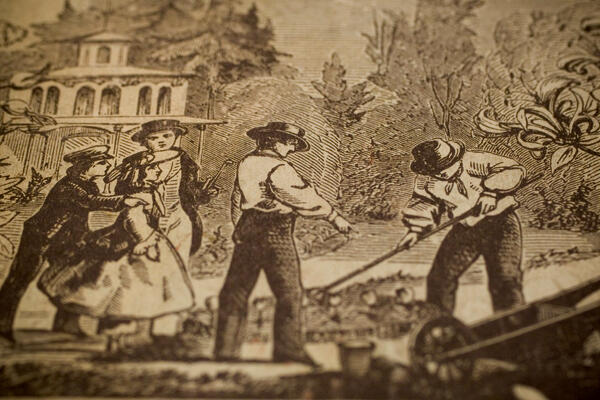 Detail from cover
Detail from cover
From the book ...
"Considering of plants inquiringly and intelligently is the study of Botany. It is an easy study, when pursued in the right way and with diligent attention. There is no difficulty in understanding how plants grow, and are nourished by the ground, the rain, and the air; nor in learning what their parts are, and how they are adapted to each other and the way the plant lives. And any young person who will take some pains about it may learn to distinguish all our common plants into their kinds, and find out their names.
"Interesting as this study is to all, it must be particularly so to Young People. It appeals to their natural curiosity, to their lively desire of knowing about things: it calls out and directs (i.e. educates) their powers of observation, and is adapted to sharpen and exercise, in a very pleasant way, the faculty of discrimination. To learn how to observe and how to distinguish things correctly, is the greater part of education, and is that in which people otherwise well educated are apt to be surprisingly deficient. Natural objects, everywhere present and endless in variety, afford the best field for practice; and the study when young, first of Botany, and afterwards of other Natural Sciences, as they are called, is the best training that can be in these respects. This study ought to begin even before the study of language. For to distinguish things scientifically (that is, carefully and accurately) is simpler than to distinguish ideas. And in Natural History the learner is gradually led from the observation of things, up to the study of ideas or the relations of things.
"This book is intended to teach Young People how to begin to read, with pleasures and advantages, one large and easy chapter in the open Book of Nature; namely, that in which the wisdom and goodness of the Creator are plainly written in the Vegetable Kingdom."
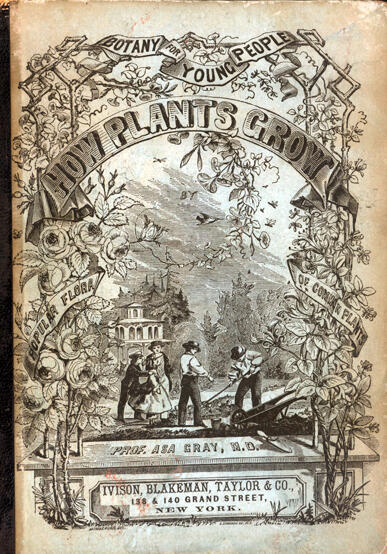
The Polar and Tropical Worlds: A Description of Man and Nature by Georg Hartwig
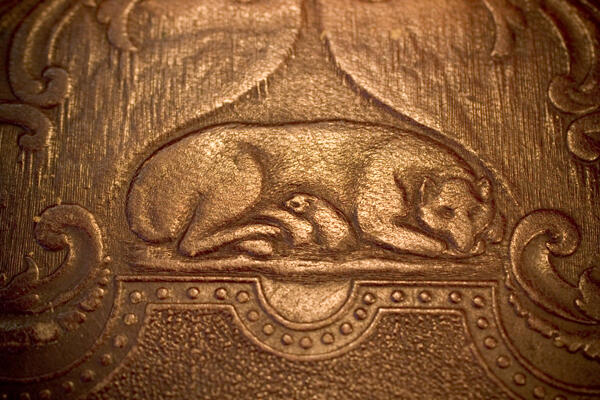
Details from cover
From the book...
"The she-bear is taught by a wonderful instinct to shelter her young under the snow. Towards the month of December she retreats to the side of a rock, where, by dint of scraping and allowing the snow to fall upon her, she forms a cell in which to reside the winter. There is no fear that she should be stifled for want of air, for the warmth of her breath always keeps a small passage open, and the snow, instead of forming a thick uniform sheet, is broken by a little hole, round which is collected a mass of glittering hoar-frost, caused by the congelation of the breath. Within this nursery she produces her young, and remains with them beneath the snow until the month of March, when she emerges into the open air with her baby bears."

Ling-Nam by Benjamin Couch Henry
 Detail from cover
Detail from cover
From the book...
"Below us tumbles the mountain stream, gathering in deep pools or rushing over great boulders. Above us rises the fern-clad slope, thickly overgrown. Another pavilion is soon reached, from which we catch our first glimpse of the delightful waterfall called "Fi-shui," "Falling Water". The water flowing down from the height above falls over a broad wall of rock about fifty feet into a large emerald pool. Masses of ferns, begonias, and orchids line the bordering rocks. From stone to stone we step until the spray of the falling water dashes its cool drops over our faces, upturned to gaze and admire. The ledge of the rock on which we stand forms the starting-point of another cascade, which pours into a deep circular basin, an ideal swimming bath. The transparent water gives no clue to its depth, and not until an umbrella, accidentally dropped, sinks to the bottom, and unsuccessful efforts to recover it are made, do we realize how deep it is. An expert diver at last secures it, and reveals the fact that the water is from fifteen to twenty feet deep in that crystal basin."

Natural History, Lore and Legend by Edward F. Hulme
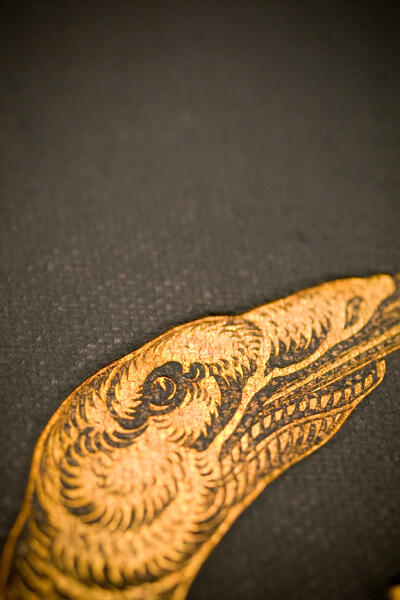
Detail from cover
From the book...
"Even the dragon, however, may not be quite so black as he is painted, for we read in one old author of a child in Arcadia that had a dragon for its playmate. There was much affection between them, but presently a considerable dread of the dragon's powers gained possession of the boy, and he compassed the brilliant idea of beguiling his companion well out into the desert and then slipping away. In the very consummation of this plan a new danger arose, as the stripling found himself in an ambush of robbers, whereupon he was only too thankful to call out to his discarded playmate, who immediately came to the rescue and very effectually scattered his despoilers. At this point the history unfortunately stops, but we may perhaps conclude that it follows on the lines of most stories of the affections, and that "they lived happy every after." However this may be, it is a charming narrative, and opens out quite a trait of dragon disposition."
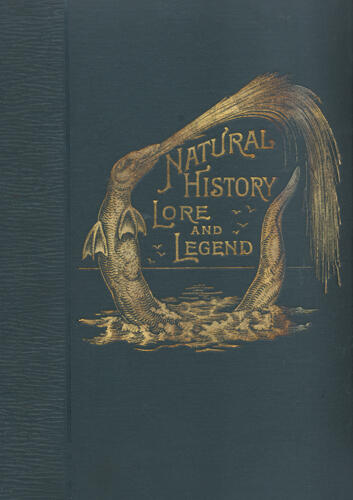
Studies of Trees in Winter by Annie Oakes Huntington
 Detail from cover
Detail from cover
From the book ...
"Outside my window the trees in a little wood stand leafless. Everything which made this wood a delight in June, the contrast of light and share among the leaves, the varying tones of green in broken sunlight, the warmth and color and summer freshness, has gone, but the trees themselves, in all their wealth of foliage were never so beautiful as now. The massive moulding of their trunks, the graceful curves of their branches, the fine tracery of their little bare twigs, now clear against the sky and again lost in a tangled network of intersecting branches, the whole beauty of their symmetry, their poise, strength, and delicacy is revealed as it is never revealed in summer."Attracted first by the obvious grace of the forms of trees as we see them from our windows in winter, we discover that a closer study of the details of bare twigs and buds in the woods discloses unsuspected beauty in texture, form, and color. Each tree has definite traits of its own which distinguish it from every other tree, and by tracing individual characteristics in the branches, trunk, stems, buds, and leaf-scars we are able to identify every tree with certainty."

A Tour Round My Garden by Alphonse Karr
 Detail from cover
Detail from cover
From the book ...
"I thought of all the riches which God has given to the poor; of the earth, with its mossy and verdant carpets, its trees, its flowers, its perfumes; of the heavens, with aspects so various and so magnificent; and of all those eternal splendours which the rich man has no power to augment, and which so far transcend all he is able to buy."I thought of the exquisite delicacy of my senses, which enables me to enjoy these noble and pure delights, in all their wants and desires; the richest, most secure and most independent of fortunes. And, with joined and clasped hands, with eyes raised towards the gradually darkening heavens, with a heart filled with joy, serenity, and thankfulness, I implored pardon of God for my murmurings and my ingratitude, and offered up my grateful thanks for all the enjoyments he had lavished upon me.
"And as I sunk to sleep that night, my spirit was filled with pity for those poor rich."

Danish Greenland: its people and products by Hinrich Rink
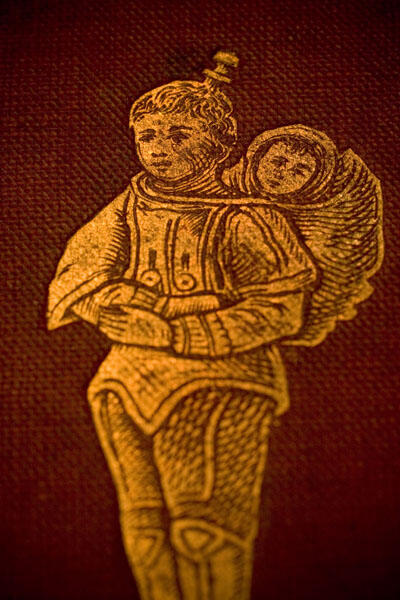
|
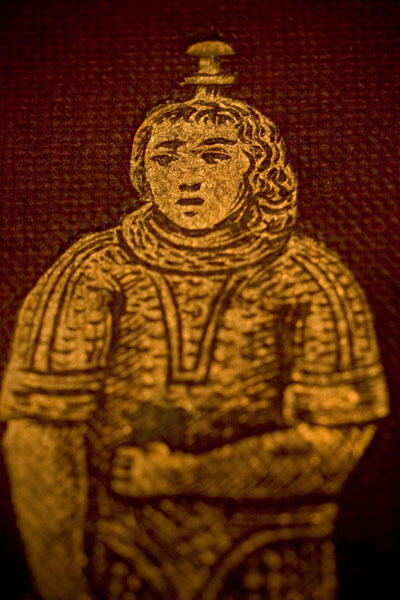
|
|
|
Details from cover
From the book ...
"Very doubtful and scanty remains have hitherto been found on the North American continent itself, which bear witness to its having been visited by voyagers from this side of the ocean, and even to its having been inhabited by European settlers several hundred years before the discovery of America by Columbus. Our sole knowledge of these ancient enterprises has been derived from the Icelandic sagas, or popular tales. These sources of inestimable value, on account of their having been written down at so early a period, when the events related in them were still fresh remembrance, though historical, exist of course only in a fragmentary condition, and bear the general character of popular traditions to such a degree that they stand much in need of being corroborated by collateral proofs if we are wholly to rely upon them in such a question as an ancient colonization of America."

Field Book of Common Gilled Mushrooms by William S. Thomas

Detail from cover
From the book ...
"Mushrooms of one kind or another are to be found at almost every season but they occur in greatest abundance after showery weather in the months of July, August and September."The collector will find a basket to be a good receptacle for them and different species may be kept separate from each other and uncrushed by having leaves or leafy twigs among them, or better yet, by being carried in paper bags. Folding paper boxes, such as are used for holding crackers are also good for this purpose.
"The mushroom is plucked entire from the ground or wood upon which it grows and especial care much be taken not to cut or break the stem. Unless the whole plant is obtained it will be difficult or impossible to know whether the stem is provided with volva or cup at the base, or whether its base is bulbose or hairy or attached to other stems. The dirt adhering to the stem, if there is any, is removed before the specimen is put with others into the receptacle. In collecting mushrooms for the table, the stems are cut off close to the cap.
"The beginner is warned against attempting to identify a new species with but one or two specimens at hand. It is desirable to have for this purpose several specimens of varied stages of development, so that one or more of them may be cut across in order that the form of the gills and interior of the stem may be noted, while yet other caps may be needed for spore prints. It is important to keep separate from each other the specimens of the various species collected."

Im Afrikanischen Urwald by Franz Thonner

Detail from cover
Franz Thonner was an Austrian botanist who wrote a number of keys to genera and families of flowering plants. He was born in 1863 and died in 1928. He made trips to the Congo to study botany. (New Phytologist, v 93, 1983) In 1896 he accomplished an important journey through the Congo basin, described in Im Afrikanischem Urwald. Twelve years later he returned to Africa to continue his studies. His health failed him upon this journey and he was forced to return home sooner than he wanted. Besides his botanical collections, he had also mapped the route between Mandungu and Yakoma, and made numerous meteorological observations, as well as obtaining vocabularies of twenty dialects. (Journal of the African Society, 1911)
This volume was printed in Berlin in 1898. From a pencil inscription on the interior we learn that it was acquired by the Harvard Botany Libraries in September of 1907. It is printed in German, and contains beautiful illustrations as well as 86 stunning photographs taken by the author depicting the people of Africa, their homes, lives, and tools.

Journey Across the Western Interior of Australia by Peter Egerton Warburton
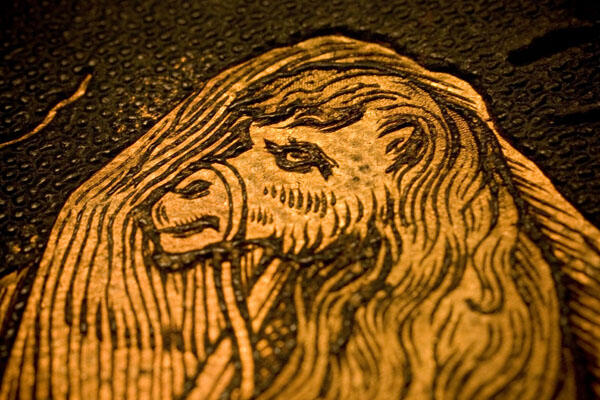
|
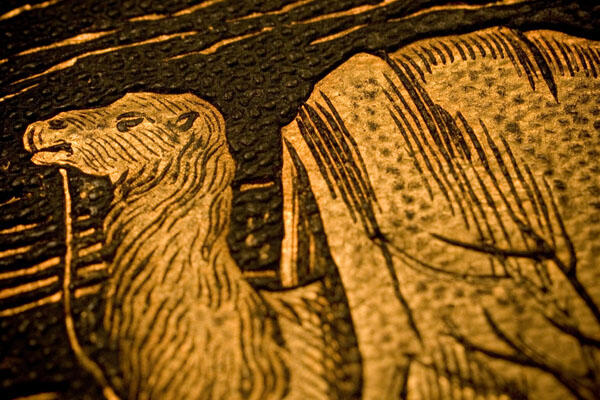
|

|
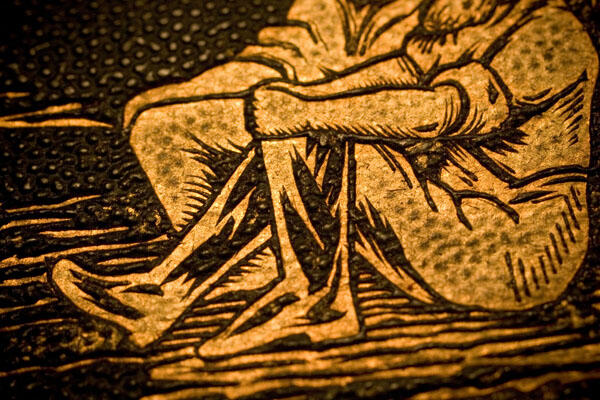
|
Details from cover
From the book ...
"We made another effort at daylight to get on, but one of the camels broke down, though it had not carried a saddle. The poor beast had become quite blind, and staggered about in a most alarming way. We could not get her beyond a mile and a half, when she knocked up under the shade of a bush, and would go no farther. We therefore also sat down to await the water to be sent out to us. The heat was intense, and my son, having been obliged to walk because the camel could not carry him, suffered very greatly from thirst, and had not water been brought us before midday, it would have gone ill with him. Between 10 and 11 a.m. Lewis returned with water from the well.
"The camel, though we gave it some water, could not move from the shade of the bush. We tried to drive it, and to drag it, but to no purpose, therefore we shot it. My son and White returned to the well for more water and to bring out camels to carry the meat. Lewis remained with me to cut up the camel and prepare it for carriage. We sent the head and tail, with the liver and half the heart and kidneys, to make soup for Charley, and a little picking for the rest. I hope the fact of the camel's head not having been turned towards Mecca, or its throat cut by a "True Beliver," may not prejudice the camel-men against the use of what we send.
"Cutting up the camel, and eating the "tit-bits" was the work of the day. We have now only five camels, and one of them so weak it cannot carry a saddle. Could we but reach Oakover, we might manage some way or other, but the camels must take us there, or we shall never see it. I am sanguine now that we shall get there with at least four camels; two days ago I never expected to be able to leave the spot I was lying upon."
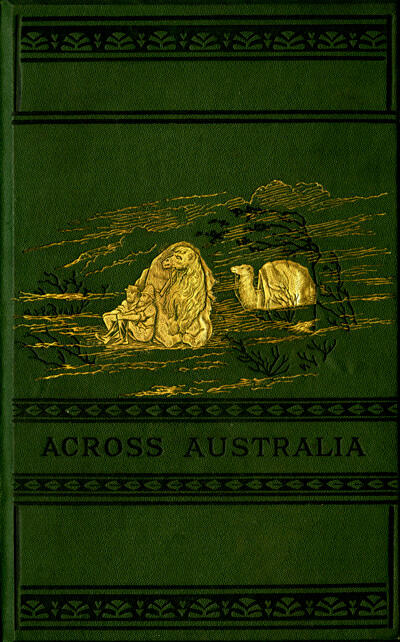
Common Objects of the Microscope by John George Wood

|
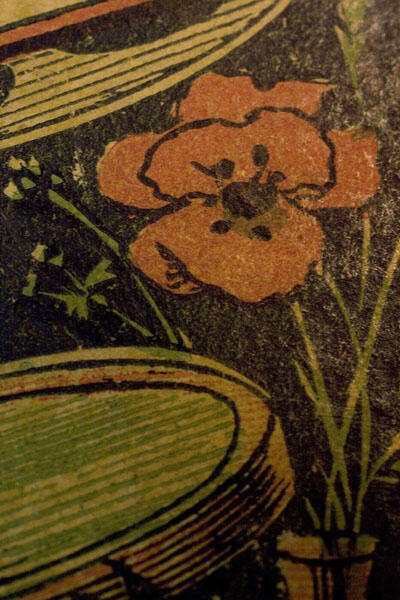
|
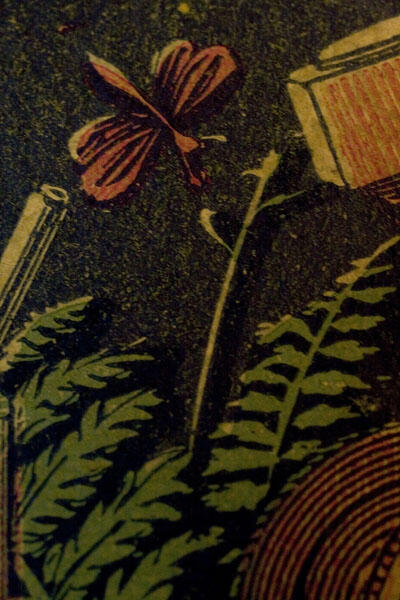
|

|
Details from cover
From the book ...
"No pen, pencil, or brush, however skillfully wielded, can reproduce the soft, glowing radiance, the delicate pearly translucency, or the flashing effulgence of living and ever-changing light with which God wills to imbue even the smallest of his creatures, whose very existence has been hidden for countless ages from the inquisitive research of man, and whose wondrous beauty astonishes and delights the eye, and fills the heart with awe and adoration."
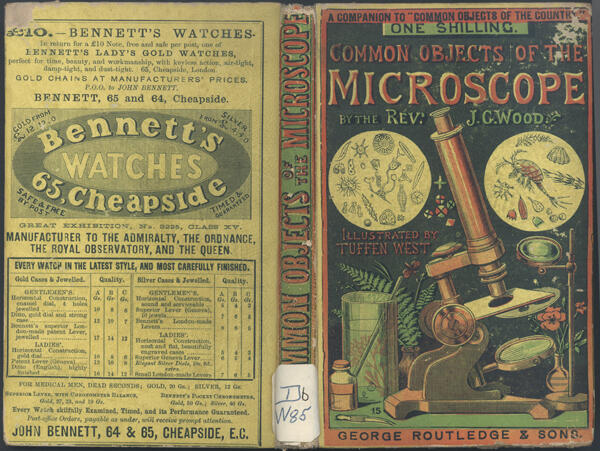
A Naturalist Among the Head-Hunters by Charles Morris Woodford

|

|
|
|
Details from cover
From the book ...
"Packing up my camera and placing it in the boat, I get a boy to carry my gun, and taking the insect-net myself, start for a short walk through the yam gardens and forest immediately at the back of the village. Half a dozen imps of boys attempt to accompany me, but I tell them I do not want them, as their continual chatter would prevent me getting within sight of any bird. Some seem reluctant to leave me, but at last, after some disparaging remarks hurled as a Parthian shot at the head of the boy who is carrying the fun, they drop away.
"I have a delightful ramble along the forest tracks for a couple of hours, during which I fill my collecting-box, and as I know what to discard, most of the insects caught are of rare or local species. I also shoot three or four specimens of a fly-catcher with chestnut body, grey wings, and white head, which appears strange to me, and afterwards proves to be a new species, which has been named by Mr. Sharp Pomarea Florentiae, after my wife.
"I notice a large orchid growing high out of reach upon a dead tree. It is apparently a Grammatophyllum, a stranger hitherto to me, but afterwards found to be not umcommon upon other islands. It was finished flowering, but the sight of the great seed-pods, as large as ducks' eggs, hanging from the flower-spike, make me long to see it in bloom. My attendant sprite expresses himself unable or unwilling to climb the tree, although I hint at untold wealth of tobacco as recompense.
"I am engaged in the attempt to compass somehow or other the attainment of the orchid in question, when a sudden tropical shower forces me to seek shelter somewhere."

Sources
Bickmore, Albert Smith. Travels in the East Indian Archipelago. New York. 1869.
Cooke, Mordecai Cubitt. Ponds and ditches. London: Society for Promoting Christian Knowledge; New York, Pott, Young, 1880.
Gray, Asa. Botany for Young People and Common Schools: how plants grow, a simple introduction to structural botany. New York: Ivison, Blakeman, Taylor & Co., 1874.
Hartwig, G. The Polar and Tropical Worlds: a description of man and nature in the polar and equatorial regions of the globe. Springfield, Massachusetts, Bill, Nichols & Co., 1872.
Henry, B.C. Ling-Nam. London, 1886.
Hulme, F.E. Natural History, Lore and Legend. London, 1895.
Huntington, Annie Oakes. Studies of trees in winter; a description of the deciduous trees of northeastern America. Boston, Knight and Millet, 1902.
Karr, Alphonse. A Tour Round My Garden. London: Frederick Warne, 18--?
Rink, Hinrich. Danish Greenland: Its People and Its Products. London: H.S. King & Co., 1877.
Thomas, William Sturgis. Field Book of Common Gilled Mushrooms, with a key to their identification and directions for cooking those that are edible. New York, London, G.P. Putnam's sons, 1928.
Thonner, Franz. Im Afrikanischen Urwald. Berlin, 1898.
Warburton, Peter Egerton. Journey Across the Western Interior of Australia. London. 1875.
Wood, John George. Common Objects of the Microscope. London, New York, G. Routledge & Sons, 1861.
Woodford, Charles Morris. A Naturalist Among the Head-Hunters. London: G. Philip & Son, 1890.
